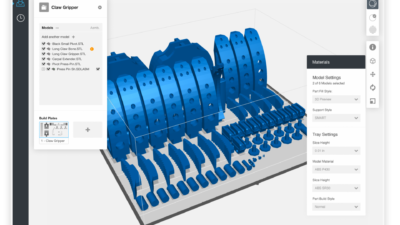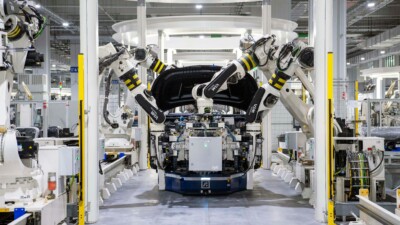FluidForm’s FRESH technologies may offer a solution to 3D printing challenging materials such as collagen and silicone.
Limited organ donors, medical materials unable to support human tissue growth, and costly drug testing failures are all challenges that researchers face in the medical field. 3D printing is steadily becoming an alternative for making progress in these areas but still has its limitations, especially when it comes to engineering human tissue.
FluidForm, a Massachusetts-based regenerative medicine company, aims to take on those challenges with its liquid 3D printing technology.
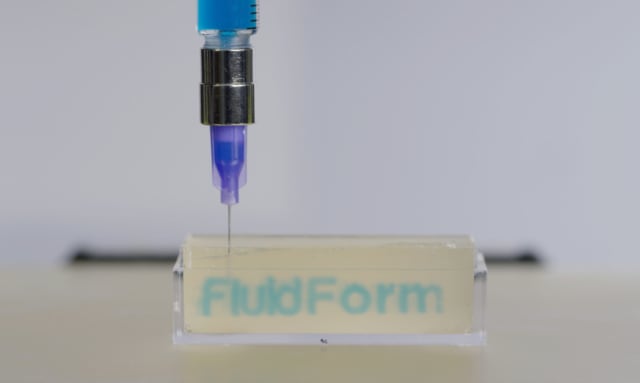
Most current 3D printing methods and research rely on modifying existing materials to enable printing them in air. The downside of that method is that it often results in an unwanted physiological change in the materials.
FluidForm took a different approach while developing a technique called Freeform Reversible Embedding of Suspended Hydrogels (FRESH). Instead of changing the material, the FRESH method modifies the 3D bioprinting environment. This enables printing with collagen, silicone and proteins, as well as any liquid polymer resins—the latter of which may be a boon to other industries, such as aerospace and automotive.
Beginnings of FRESH
Much of the FRESH technology came about in the Regenerative Biomaterials and Therapeutics lab at Carnegie Mellon University (CMU) by Adam Feinberg, FluidForm CTO and cofounder, and professor of biomedical engineering and materials science. In 2018, Feinberg’s core technology to 3D print collagen resulted in the launching of FluidForm.
The following year, the company’s proof-of-concept study was published in Science. The team was able to accurately reproduce the anatomical structure of hearts from patients’ unique MRIs.
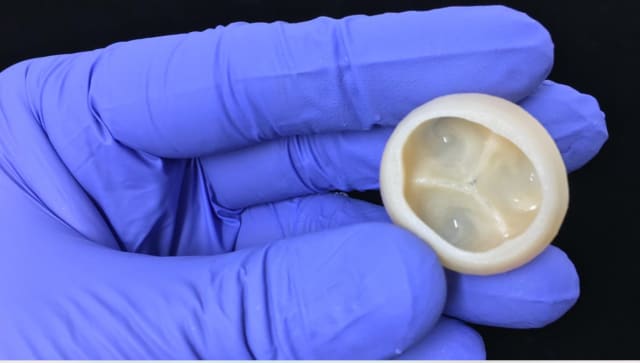
How FRESH Technology Works
Current bioprinting techniques require UV light and high temperatures to work. FRESH eliminates those necessities by enabling the 3D printing of cells and proteins using natural gelation chemistry—enzymatic, ionic, pH—via its LifeSupport bath. Bioinks and other materials are injected into the bath, which supports and rehydrates the materials for extrusion while ensuring that no deformation or collapse occurs. Unlike printing in air, this bath triggers chemical interactions to happen naturally. After printing, the hydrogel is melted away using heat.
LifeSupport enables different materials to be printed together into any geometry without the fidelity of the printed part being affected. Additionally, other proteins can be added to ensure the tissue properly develops. This enables the creation of a tissue structure similar to how the human body builds it.
According to FluidForm: “LifeSupport can be rehydrated in a range of buffers and cell culture media to support multiple cell types and specific bioinks. LifeSupport can also be rehydrated to support the cross-linking and/or gelation of multiple types of bioinks within the same support material.”
Scalability is another FRESH technology feature that FluidForm touts. Many existing bioprinters are only capable of printing something as big as a postage stamp. According to the company, the only limitation is culturing enough cells.
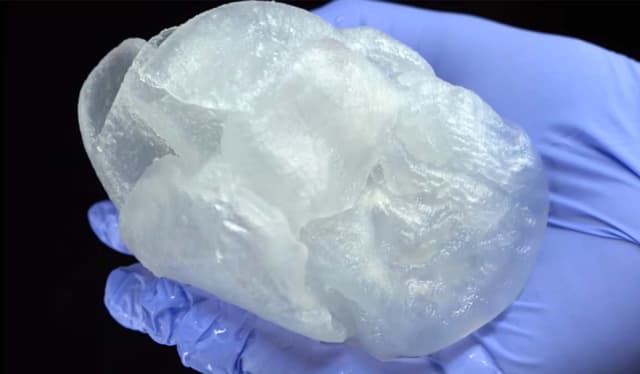
Making Medical Strides
Since the company’s research was published, many investors and big names in the medical field have taken note. In 2021, FluidForm began collaborating with Ethicon, a Johnson & Johnson Medical Devices company, to develop bioprinted tissues with the characteristics of real human tissue.
In June 2022, Hackensack Meridian Health and its Bear’s Den innovation program announced their investment in FluidForm to further advance its tissue technology, as well as surgical repair and drug discovery. In addition, FluidForm has received grants from the National Institutes of Health (NIH) and National Science Foundation (NSF) and has established a pilot biofabrication line.

FluidForm has already made its technology available commercially. Fargo Additive Manufacturing Equipment 3D, formerly Aleph Objects, launched its LulzBot Bio Printer, a FRESH-certified printer, in 2019. This open-hardware machine is compatible for use with bioinks collagen and other soft biomaterials. Designed for accessibility, its main target is research applications in the fields of tissue engineering, regenerative medicine, and cosmetic and pharmaceutical testing.
CELLINK also enables the use of FRESH on its BIO X printer. Using FRESH enables tissue engineers to 3D bioprint at higher resolutions and with complex geometries. Instead of spending time optimizing inks for the print, engineers can skip that step and instantly start printing tissue and scaffolds.
Future Industry Applications
While it may still be a few years before FRESH technology receives Food and Drug Administration (FDA) approval for use in actual implants, FluidForm continues to look ahead and hone its technologies. For other industries—especially those that require lightweighting applications, such as automotive and aerospace—the use of lightweight silicone and other unmodified polymers to create complex designs may hold new potential.
High-performance polymers continue to be a trend. Along with being lighter and more cost-effective, they are often faster to produce and can be made in more complex shapes. With all their benefits, using traditional stereolithography (SLA) or Digital Light Processing (DLP) to print them comes with a few downsides. These polymers typically are modified, require the addition of a costly pigment, have a low viscosity and don’t allow for multi-material printing.
FRESH technology enables users to print with various polymers and elastomers that are unmodified. This ensures that they maintain their natural properties and also enables different materials to be printed together. Thermoplastic filaments and resins are easier to work with in standard printers but may not have the desired qualities of a thermoset. Since thermoset is a polymer-based material, it can be printed with FRESH. Thermosets tend to be stronger and stiffer thanks to their crosslinked nature. When a manufacturer wants an end product that is resistant to softening and losing its shape like may occur with a thermoplastic, FRESH may be a promising option.
Foam is another trending material that is difficult to create. Although foam has already shown promise in uses such as football helmets and shoes, FluidForm believes that its FRESH technology may provide advances in creating complex foams. The technology’s ability to print in all directions means that it can create open-cell foams with truss and node architecture. The ability to increase void space allows for drastically softer foam with the ability to tailor elasticity and compression while maintaining long-term mechanical performance.
As robotics continue to develop, soft robotics is becoming a hot topic. FRESH may offer new opportunities to create biohybrid materials that enable enhanced sensing with biosensors and nanomaterials. FRESH also allows for nonplanar printing—printing parts with curved layers. This novel technique further provides freedom to create unique geometries, including those that require an anisotropic property, such as 3D glasses.
For manufacturers reverse engineering a part or developing a new one that may work better, FluidForm’s evolving technology might be worth keeping tabs on.
Interested in other 3D printing innovations? Check out This Company Is Shaking Up Additive Manufacturing with Ultrasonics and FGF Printing Advances May Be a Game Changer.
